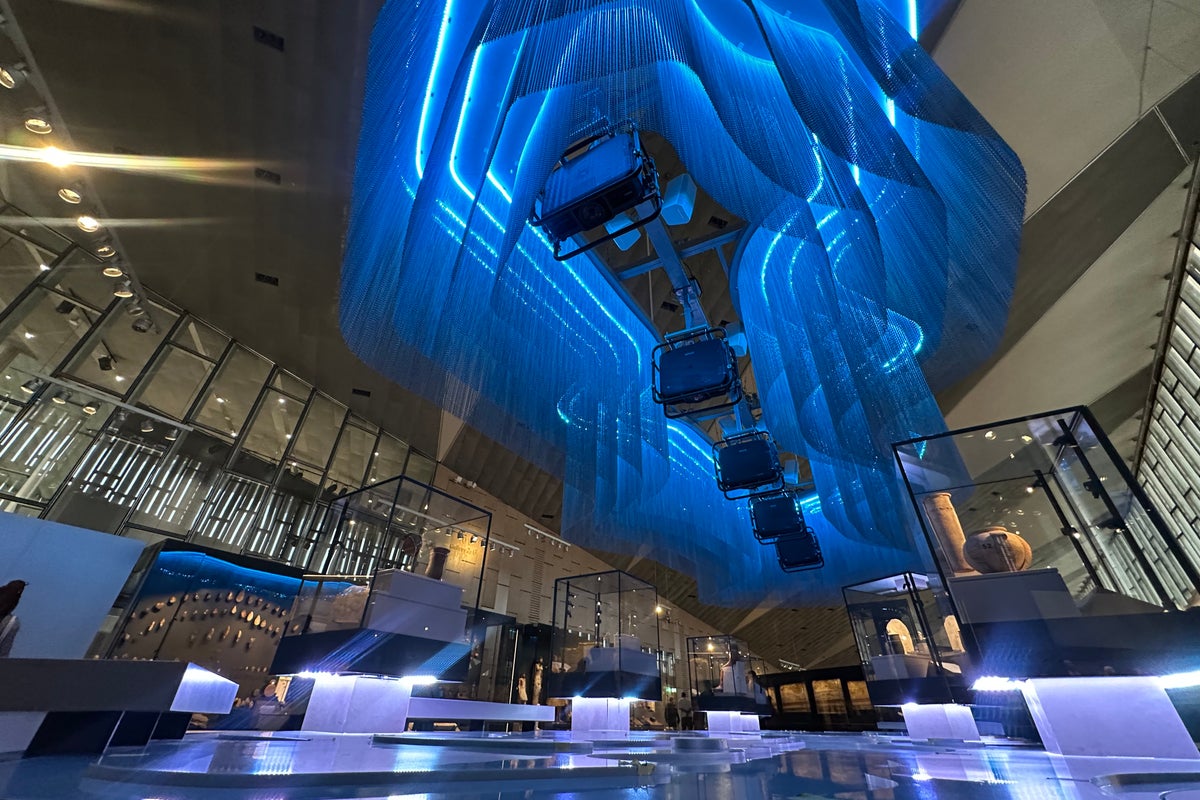
More than 30 years in the making, the colossal Grand Egyptian Museum will formally open its doors to the public in a lavish ceremony on Saturday.
The $1 billion project will be the planet’s largest museum dedicated to a single civilisation, boasting 500,000 square metres of space – a size larger than Vatican City and roughly equivalent to 70 football pitches.
Holding over 50,000 artefacts, its collection surpasses the Louvre’s comparatively modest 35,000. Egypt’s government hopes it will provide a much-needed supercharge to the country’s tourism industry.
The museum is one of the mega-projects championed by President Abdel-Fattah el-Sissi, who since taking office in 2014 embarked on massive investments in infrastructure with the aim of reviving an economy weakened by decades of stagnation and battered by the unrest that followed the 2011 Arab Spring uprising.
Situated next to the Pyramid of Giza, the museum boasts a towering, triangular glass façade in the style of the nearby pyramids, designed by the Irish firm Heneghan Peng Architects.
Below we look at some of the highlights ahead of the grand opening.
King Tutankhamun Halls
King Tutankhamun’s 5,000 piece collection will be displayed in its entirety for the first time since British archaeologist Howard Carter discovered the Pharaoh’s lost tomb in 1922 in Luxor.
One of the only rulers in history to be worshipped as a deity during his lifetime, the Golden Pharaoh’s sanctuary is one of the most-anticipated highlights and is spread over two halls covering 7,000 square metres.
It includes six war chariots, which will be reunited to be displayed together for the first time. A previously unseen leather shield will also be on display along with four gilded wooden shrines and mummified foetuses. Three funeral beds were painstakingly restored at the museum’s purpose-built conservation centre.
They have been redesigned to reflect the Pharaoh’s tomb in the Valley of the Kings, where his body remains. His gold-covered sarcophagus and burial mask constructed of gold, quartzite, lapis lazuli and coloured glass will also be on display.
King Khufu’s solar boat
Another centrepiece of the museum is the 4,600-year-old solar boat of King Khufu, the pharaoh who is credited with building the Great Pyramid of Giza.
The 140ft wooden boat, discovered in the 1950s, was buried next to the Great Pyramid for Khufu — or Cheops as he is also known — to use in the afterlife.
In 2021, it was moved from its display site by the pyramids into the Grand Egyptian Museum on a remote-controlled vehicle imported from Belgium.
Statue of Ramesses II
In the museum’s entrance atrium stands the granite colossus of one of Egypt’s most famed pharaohs, Ramesses the Great.
The 3,200-year-old, 36ft tall statue was moved to the museum after decades of standing in the centre of a traffic-clogged roundabout in front of Cairo’s main train station.
The museum will also sport the world’s first hanging obelisk, one of 10 raised by Ramesses II. The 52ft, 87-ton structure will be supported by four pillars so visitors can see the cartouches carved on its bottom.
Grand Staircase
A six-story staircase lined with ancient statues of pharohes leads from the atrium to the museum’s main galleries. There are also a number of sarcophagi to the walkway.
At the top the staircase there is a huge open space with views of the pyramid of Khafre.
Throughout the museum, tourists can move on foot or by using environmentally friendly electric vehicles.
Twelve Galleries
The museum includes 258,000 sq ft of permanent exhibition space, a children’s museum and conference and educational facilities, and a commercial area as well as a large conservation centre.
The galleries opened to the public last year and exhibit artefacts spanning thousands of years from prehistoric times to the Roman era, organised by era and themes.
Many of the 50,000 artifacts in the building were moved from the Egyptian Museum, a packed, century-old building in downtown Cairo’s Tahrir Square. Others were recently unearthed from ancient cemeteries, including the Saqqara necropolis, another complex of pyramids and tombs about 14 miles south of the museum.
They are equipped with state-of-the-art technology featuring multimedia presentations to help explain the ancient civilisation to a younger generation, said Ahmed Ghoneim, the museum’s CEO.
“We’re using the language that the Gen Z uses right now,” he said in an interview. “Gen Z doesn’t use anymore the labels that we read as old people but rather use technology.”
Thousands of years of history more than 30 years in the making
The museum has had a long and complex history, with it first being launched as an idea by President Hosni Mubarak in 1992.
Its foundation stone was later laid in 2002 with construction beginning in 2005. This was stopped after the Arab Spring in 2011, and then postponed again due to the Covid pandemic. Its launch was recently delayed by Israel’s war in Gaza on Egypt’s border.
Egypt’s tourist industry was impacted by the Arab Spring and the political turmoil that ensued. A slow recovery from the Covid pandemic further impacted the country, which attracted 15.7 million tourists last year. It aims to draw 30 million by 2032.
A metro station is currently being constructed at the building’s gates, with the recently-built Sphinx International Airport 40 minutes away.
